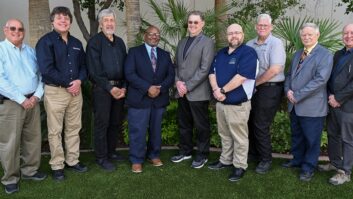The approximately 1,200 rural public radio stations in the United States — all independently owned and operated — play a vital role in informing and protecting their communities, and deserve continued “robust” federal support. That’s the gist of the just-released Alliance of Rural Public Media (ARPM) report entitled, “Connecting America: The Essential Service of Rural Public Radio.” It can be found online.
The United States’ rural public radio network serves all 50 states, Guam, Puerto Rico and the U.S. Virgin Islands, as well as Native American and other island communities. The ARPM report is based on a survey of more than 100 rural public radio stations.
A Vital Service
According to the ARPM, America’s rural public radio stations play a vital role in providing information to underserved communities — including local news, weather alerts, cultural and educational programming, and other content not available elsewhere.
“Public media in rural Alaska isn’t an alternative to other media service. It is often the only daily local source of critical health and safety messaging,” said Mollie Kabler, executive director of CoastAlaska Inc., in a news release about the ARPM report issued by Rep. Mark Amodei, co-chair of the Public Broadcasting Caucus. “News reporting by local reporters known in their communities is an antidote to distrust of the media and the proliferation of misinformation,” Kabler said. “Federal support for the infrastructure and operations of small stations is essential to our democracy.”
“In many Eastern Kentucky communities, WEKU is the only source of news and information,” said Mike Savage, director and general manager of WEKU, in the same Amodei news release. “We’ve told so many stories that impacted our community, including how a local folk singer organized a musical instrument donation program to help Western Kentucky residents who experienced severe loss following deadly tornados in December 2021. It is a prime example of how rural public radio stations are able to tell the story of rural America.”
High Costs, Low Revenues
The small population bases and remote locations of rural public radio stations confront those stations with serious cost and issues.
According to the ARPM report, using data from the Corporation for Public Broadcasting (CPB, the source of federal funds for these stations), “Broadcasting and engineering costs represent 15 percent of the average rural radio station’s annual expenses, compared to 12 percent for the rest of the industry … A third of rural stations in the Rural Public Media Survey spend 20 to 30 percent of their annual budgets on infrastructure-related costs, with nearly one in ten spending more than 50 percent.”
As for revenues? “During FY2020, CPB provided more than $42 million to support rural stations, approximately 9 percent of the total appropriation of $445 million for all of public broadcasting,” said the ARPM report. “Rural stations leveraged this funding to raise $140 million in non-federal funds, representing a return of over $3.10 for every federal dollar. This return tracks lower than the rest of the public radio industry, which on average is able to leverage the federal investment into raising $10 for every federal dollar, and is due to the challenges of fundraising in areas with low population density and lower household incomes.”
Because rural public radio stations have problems raising funds from their smaller audiences, they end up being more reliant on federal fund. “CPB grants on average represent 21 percent of a rural radio station’s revenue, compared to an average seven percent for the rest of the industry,” said the ARPM report. “More than half of all rural grantees (94 stations) rely on this revenue for at least 25 percent of their budget, and for 32 stations — many of them located on Native American reservations — CPB funding accounts for 50 percent of their revenue.”
[Visit Radio World’s News and Business Page]
What They Want
Faced with these challenges, the ARPM makes three recommendations on behalf of its rural public radio station members.
Maintain robust federal funding for public broadcasting: “Nearly 70 percent of the (CPB) appropriation is distributed directly to public radio and television stations in the form of Community Service Grants, and the additional support provided to rural stations recognizes the challenges these stations face in raising outside funding,” said the ARPM report. “Without federal funding, millions of Americans in remote and underserved areas of the country would lose a critical lifeline to local news, emergency alerting, and music and cultural programming.”
Continue FEMA support for station infrastructure: “The Next Generation Warning System, a competitive grant program within FEMA and the U.S. Department of Homeland Security, enhances public media stations’ ability to transmit alert, warning, and interoperable communications and integrate emerging technology into their systems,” the ARPM report said. “This program is even more important for rural stations, which spend a disproportionate amount of their operating budget maintaining the vast infrastructure required for universal access, and are impacted by extreme weather events.”
Enhance support for public radio collaborations and partnerships: “Rural public radio station collaborations benefit rural audiences with improved access to local and regional news and engaging music or cultural programming that celebrates the community,” said the ARPM report. “Enhanced funding for these collaborations, through dedicated federal funding or grants support, can reinforce rural arts, education, and news for years to come.”
How well the ARPM report will be received by Congress remains to be seen, especially on the verge of contentious mid-term elections. But at the very least, America’s rural public radio stations have made their case.











